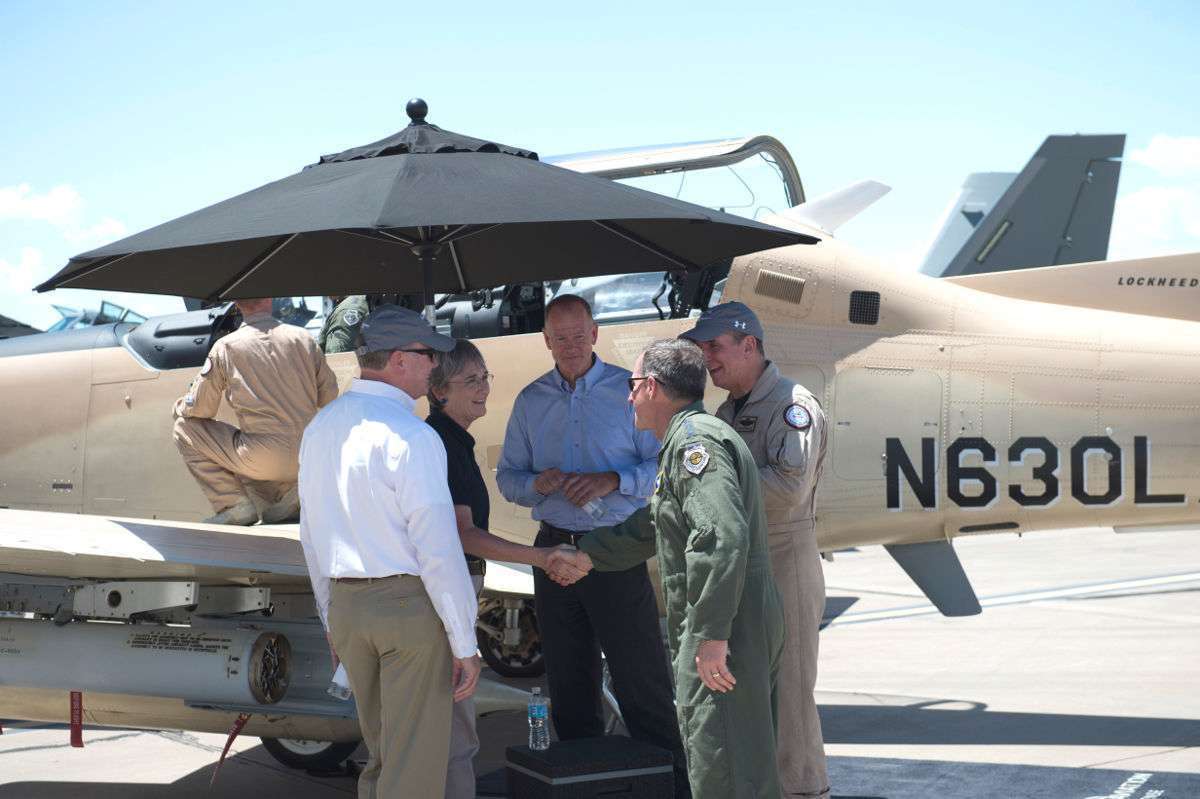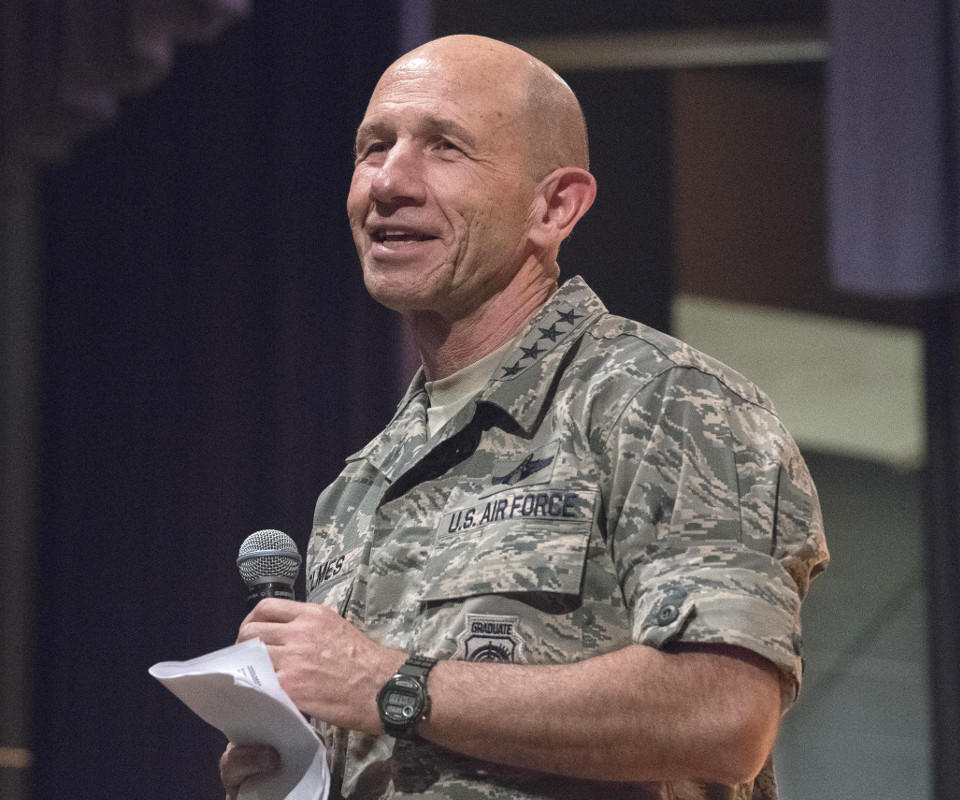The U.S. Air Force has suspended its light attack experiment, also known as OA-X, indefinitely following the fatal crash of an A-29 Super Tucano aircraft taking part in the project near Holloman Air Force Base in New Mexico. The service now says it could have enough data to end the evaluations early, but this only raises renewed questions about why this round of tests was necessary in the first place.
The OA-X tests have been on hold since the mishap on June 22, 2018, which killed U.S. Naval Reserve aviator Lieutenant Christopher Casey Short. This second phase of the project began on May 7, 2018, and followed an initial round of tests that occurred at Holloman in August 2017. Embracer and Sierra Nevada Corporation’s A-29 and Textron’s AT-6C Wolverine are the only two aircraft the Air Force is evaluating at this time, though this might change in the future.
“The experiment team is currently reviewing the data collected from the current phase of experimentation, as well as last year’s experiment activities, to determine the way ahead,” a U.S. Air Force spokesperson told FlightGlobal on June 28, 2018. “The forecast for return to flight operations for the experiment is still to be determined.”
Earlier that same day, U.S. Air Force General Mike Holmes, head of Air Combat Command, which is in charge of the OA-X effort, made similar comments at a defense writers group breakfast. He also declined to offer any additional details about the accident, which remains under investigation.
The second part of the OA-X project was supposed to wrap up in July 2018. We don’t know how many specific test points the A-29 and AT-6C still had to cover in this phase.
The Air Force has said it could award a contract as early as some time in 2019 for a light attack aircraft based at least in part on the outcome of the experiment. It remains unclear whether the service intends to pick from the two types it is evaluating now or start an all-new competition open to
any company using requirements it has developed during the OA-X tests.

However, as we at The War Zone
repeatedly, there are many questions about how committed the Air Force is to OA-X or the idea of acquiring a light attack aircraft in general. Since 2007, various branches of the U.S. military have evaluated the A-29, the AT-6C, or both aircraft in the light attack role on no less than six separate occasions, including the 2017 tests at Holloman.
It remains hard to understand how there was not enough existing information about the two aircraft and their capabilities both inside the Air Force itself and from its sister services after more than a decade of experimentation with the aircraft. On top of that, the service already flies A-29s in order to train foreign pilots on the type and it operates an unarmed version of the T-6 in a basic training capacity.

Yet, after the Air Force concluded that first round of OA-X flights, it insisted that it still needed to collect additional data on the capabilities of the two planes. At the same time, the serviced canceled plans for an actual combat field test that could have occurred in Iraq. In 2015, U.S. Special Operations Command sent a pair of heavily modified OV-10G Bronco light attack aircraft to fly real-world missions in that country as part of a previous project that led in part to OA-X.
“Rather than do a combat demonstration, we have decided to work closely with industry to experiment with maintenance, data networking and sensors with the two most promising light attack aircraft – the AT-6 Wolverine and the A-29 Super Tucano,” Secretary of the Air Force Heather Wilson said in February 2018. “This will let us gather the data needed for a rapid procurement.”

If the Air Force goes ahead and shuts the second phase of OA-X down without completing the full slate of tests, but then proceeds with a plan to purchase any number of light attack aircraft, it can only call into question the necessity of this extended evaluation in the first place. If the service puts its supposed light attack ambitions on hold entirely, it would reinforce existing evidence that it was, at best, ambivalent about the concept from the beginning. The third possibility is that the tests resume at some point in the future, which could delay the entire project.
To be fair, the Air Force has been increasingly supportive of the project. They are also facing growing pressure from OA-X’s supporters in Congress, who added millions of dollars into the Fiscal Year 2017 defense budget for light attack aircraft and are looking to put even more money into the spending package for the next fiscal cycle.
“We’re certainly very sad about the loss of Lieutenant Chris Short, a great aviator that was dedicated to trying to find out what the answers were about [if] can we use this airplane in some circumstances to free up out more sophisticated fighters,” Holmes added at the roundtable on June 28, 2018. “Whenever you’re trying something new, there are risks of trying something new and working through it, and without knowing exactly what happened, and certainly without trying to insinuate exactly what happened – aviation’s not necessarily risky, but it’s unforgiving.”

But for all their public pronouncements, the service continues to largely deflect from answering questions about how many aircraft it might buy, when they might enter service, and what role it sees light attack aircraft playing in its future force structure broadly. The major risk in not having these questions answered sooner rather than later is that any aircraft the Air Force does end up buying might end up without a clear mission and subsequently orphaned within the service. This happened to the C-27J Spartan light airlifter, which quickly ended up horse traded to other military branches and U.S. government agencies.
Instead, the Air Force has focused heavily on plans to make any future program a multi-national effort with smaller American allies and partners who could make good use of a relatively simpler combat aircraft. This logic is both questionable and confusing since the U.S. military has already facilitated the delivery of dozens of A-29s, as well as various other light attack aircraft, to various countries.
How the Air Force ultimately decides to proceed in the aftermath of the June 2018 crash at Holloman might finally force the service to fully explain its plan to procure a fleet of light attack aircraft and any associated timeline for doing so. We will definitely keep a close eye on how this situation continues to develop.
Contact the author: jtrevithickpr@gmail.com
